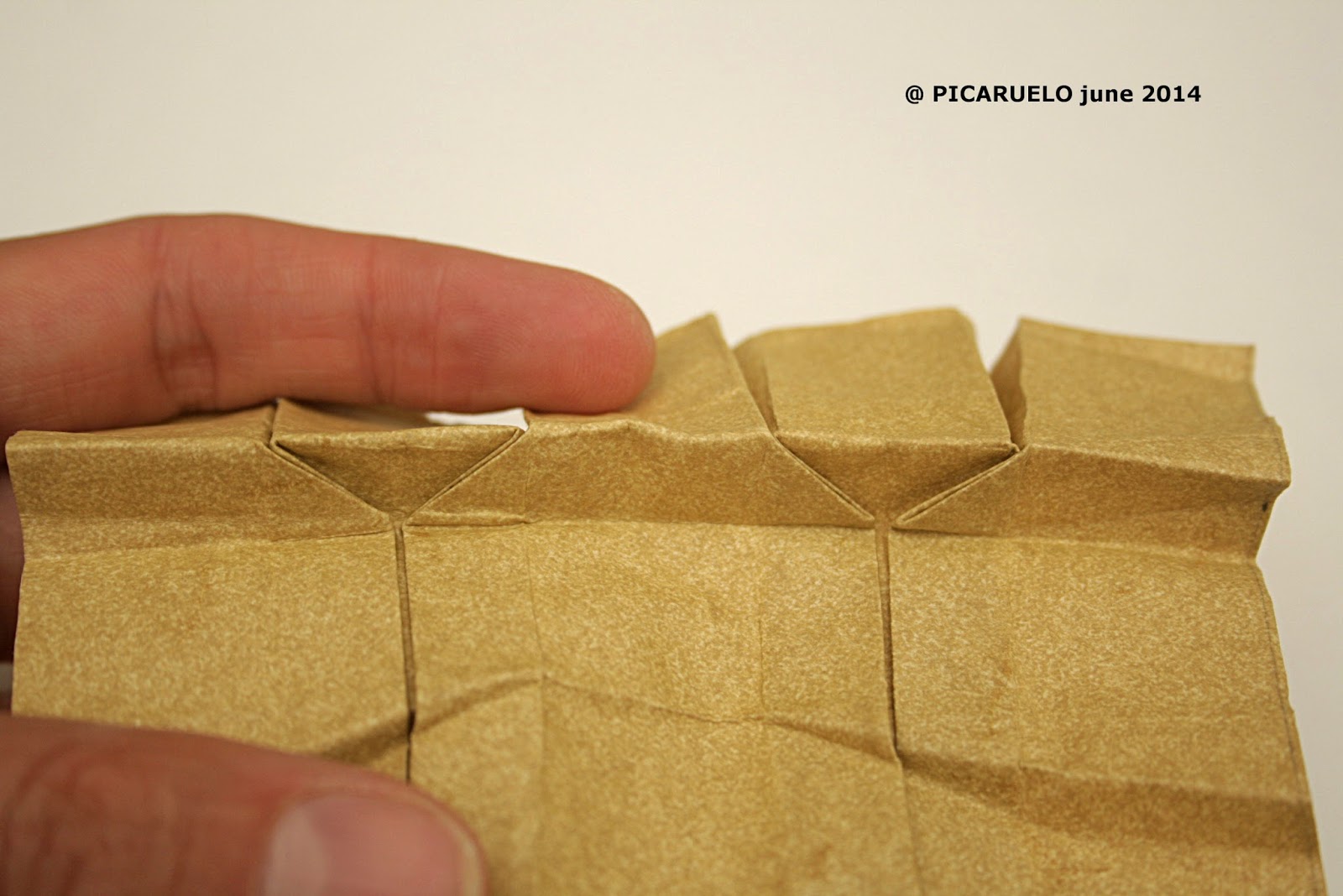 |
| Eric Joise's saxophonist in the Zaragoza Exhibition in 2013. |
 |
| Saxophone CP in the upper part |
 |
| Two different saxophones folded by Joisel |
I was thinking about trying to replicate this model but in the end I preferred the idea of making the keys similar to the clarinet's keys. This is the end result:
 |
| My own design for the saxophone folded from kozo paper and painted with acrylic deep gold |
 |
| The clarinet CP that inspired me to create the saxophone |
When I designed my final saxophone I had to decide how many keys to fold. When you look at a real saxophone it looks really complex, with the body surrounded by keys, levers and hooks. I chose to fold three to accommodate three fingers per hand but I guess any other number would be as good as this one. It would be as simple as adding more key lines to the CP. In this photograph you can see a real person playing the saxophone and how the fingers are placed.:
 |
| Saxophonist example pressing three keys with each hand. Original image here |
|
|
| There are a lot of different mechanisms around the tube making the number of keys to fold a difficult choice. Original image here |
 |
| The paper with the nine stripes and the upper row of keys precreased |
 |
| After folding the 9 stripes |
 |
| We start to fold the keys, you can see one on top (the front key) and one in the middle of the photo (one side key) |
 |
| We proceed with the folding |
 |
| We close the paper |
 |
| And squeeze the paper to put the keys together |
 |
| Repeating on the other side we get three keys |
 |
| This is the back side of the paper. It doesn't stand flat |
 |
| We repeat with the rest of the keys including the two back keys |
 |
| Finally we squeeze each key to give it the final form |
 |
| The back side with all the upper keys folded |
 |
| We star to bend the tube |
 |
| This is the first bending of the tube |
 |
| We repeat three times |
 |
| We make another bending fold |
 |
| And one last bending fold to separate the bell from the tube slightly |
 |
| This is the final shape of the tube |
 |
| We start with the bell. |
 |
| We fold this little triangle |
 |
| We push it inside |
 |
| After repeating with all the flaps |
 |
| The same area from the back side |
 |
| We separate the layers to make the end of the paper the wider we can |
 |
| And finally shape the bell |
 |
| The last step is folding the mouth piece |
 |
| A little moisture and modelling takes us to the final result |
Finally I don't want to lose the opportunity to thank Victor J. Quintero for his help to deduce Joisel's saxophone CP. After seeing my saxophone's photo in my flickr he deduced and sent me this CP.
 |
| Simplified CP deduced by Victor J. Quintero |
 |
| Victor J. Quintero's folded saxophone. We would get a saxophone very similar to Joisel's one by adding more diamonds to the CP |

espectacular, muy bueno maestro:
ReplyDeleteyo diseñe uno muy simple, te lo comparto a lo mejor te gusta
https://youtu.be/LNtURJ4TezI
Dommage ça manque de précision amities borys
ReplyDeleteDommage ça manque de précision amities borys
ReplyDelete